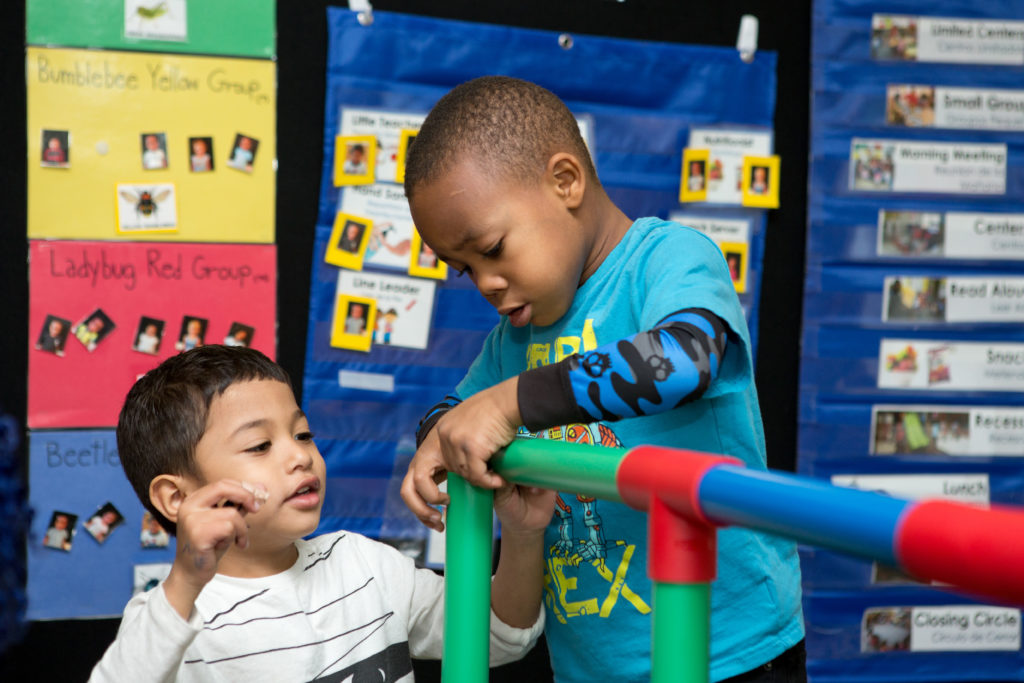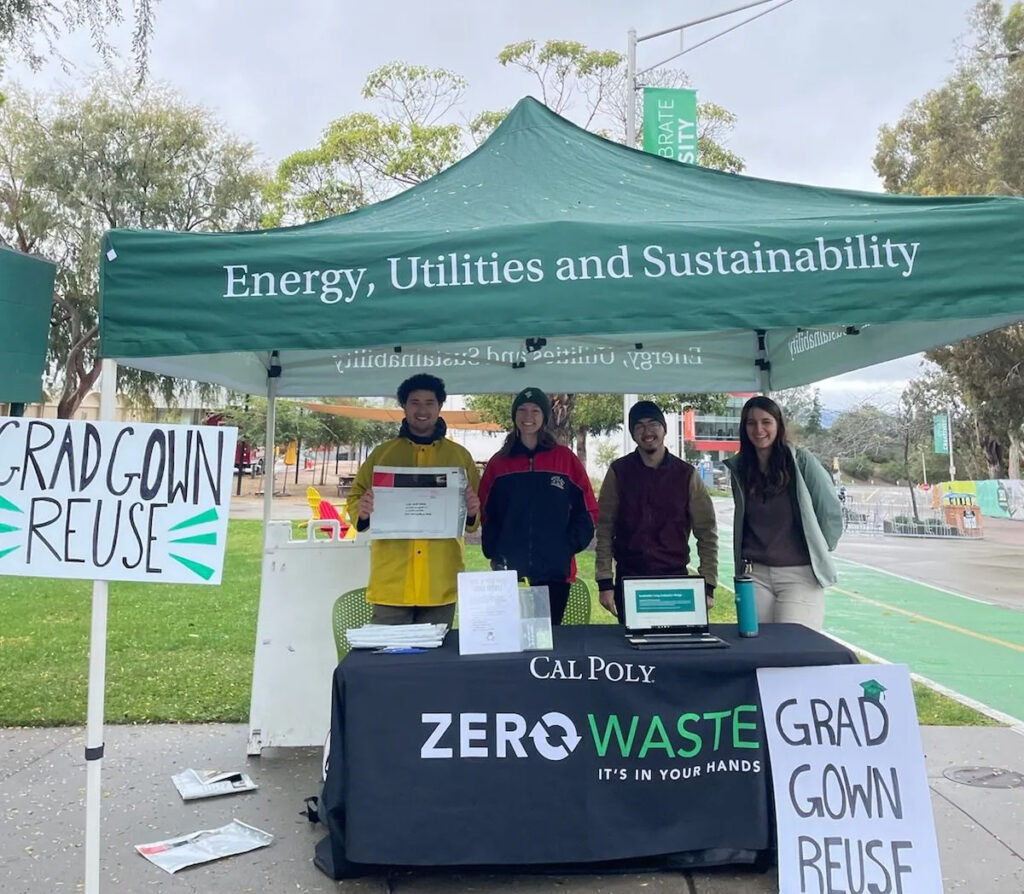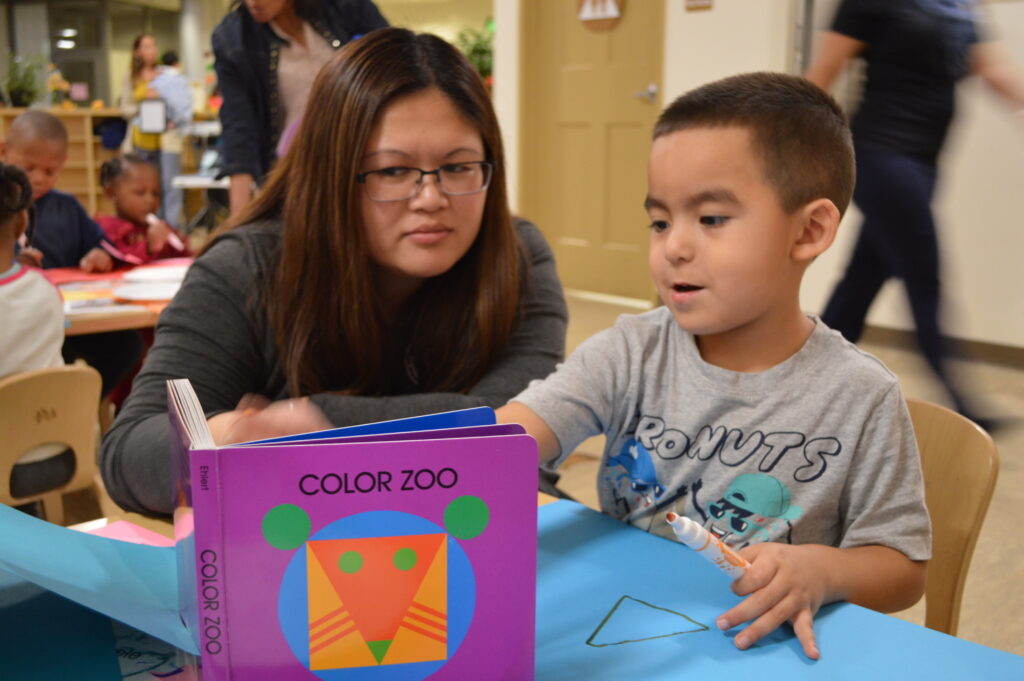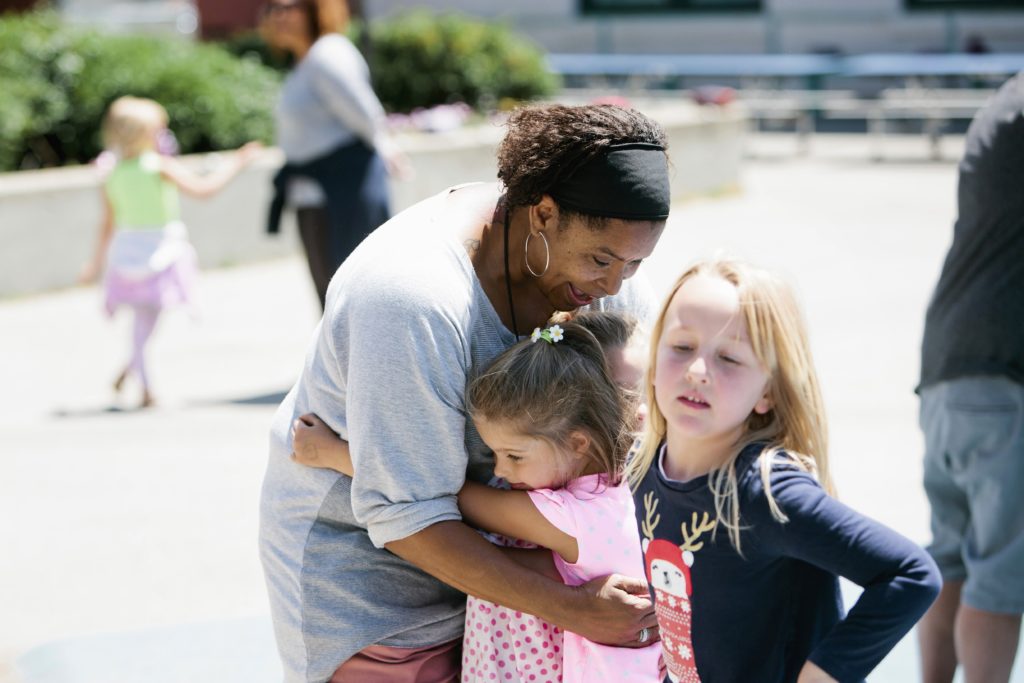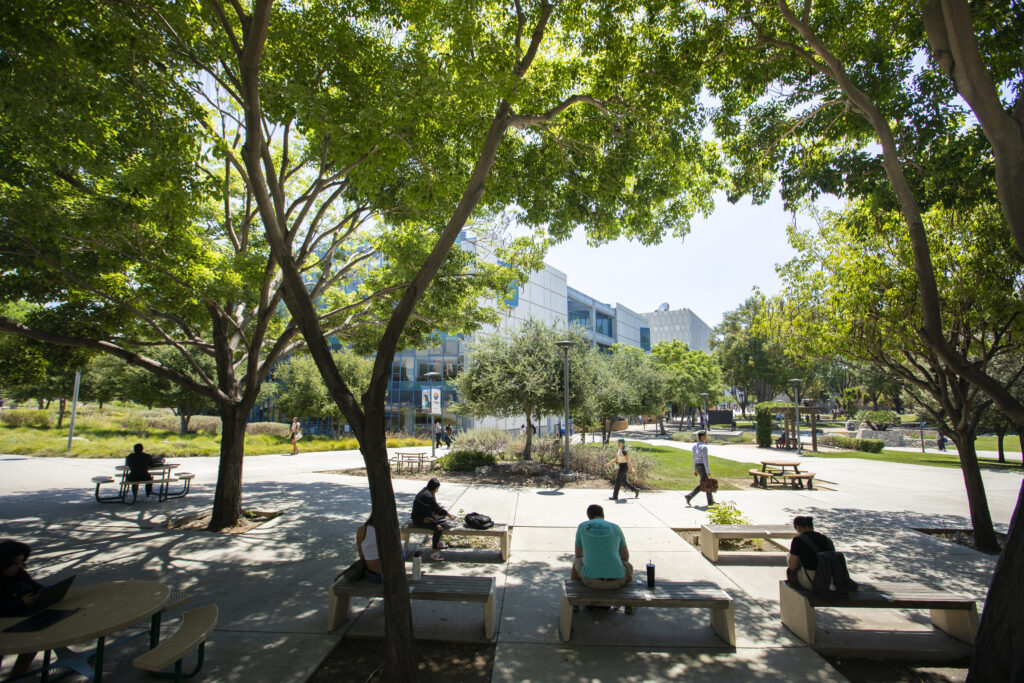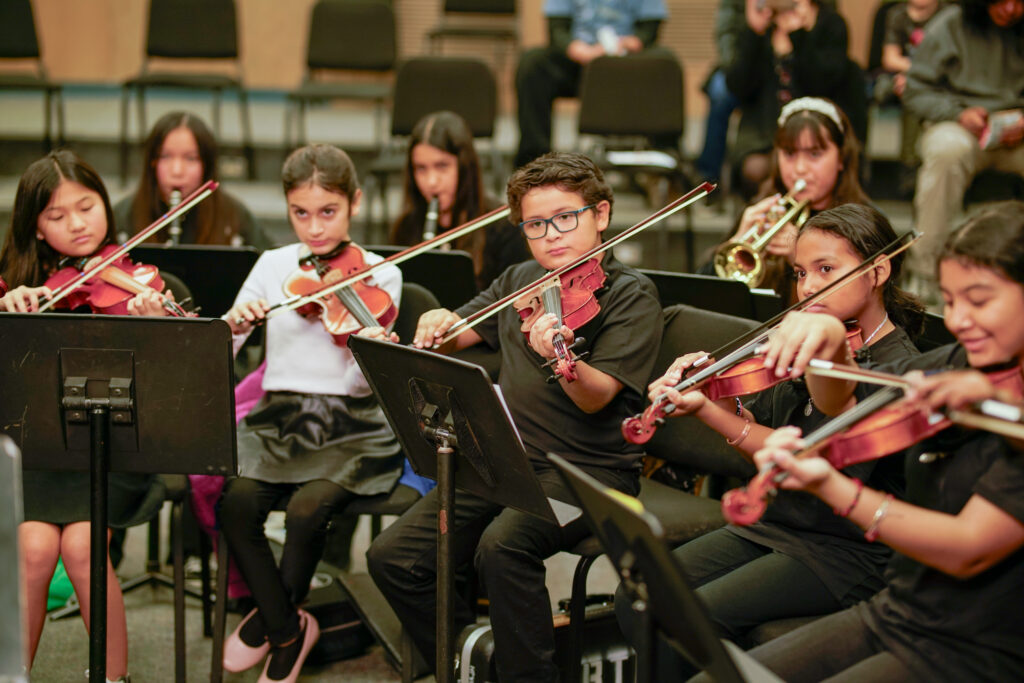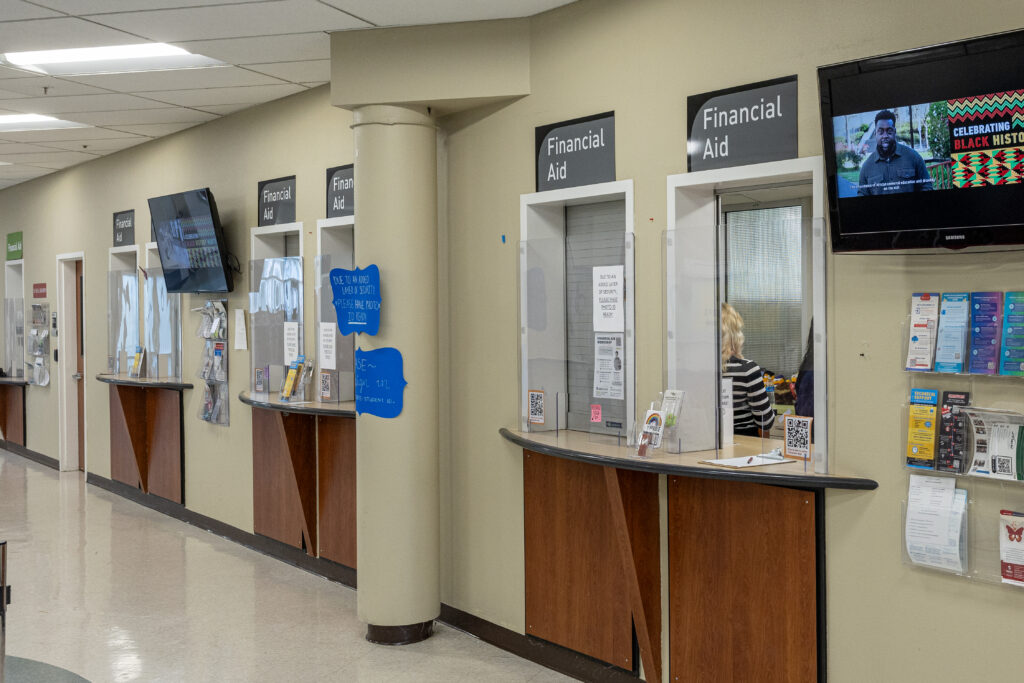
Preschool students build a structure from plastic interlocking tubes.
Credit: Allison Shelley for American Education
Author’s original hed: As Universal Preschool Access Expands to Reach More Families of Color, So Do Inequitable Practices Such as Racial Bias, Exclusionary Discipline and Lack of Cultural Representation, Leading to a Crisis for Black Boys
As California progresses toward universal preschool access, the need increases for training, hiring and retaining early childhood male educators who are racially and ethnically representative of the children in their classrooms. A study examining preschool teachers’ implicit biases and expulsion rates found that teachers spent significantly more time watching Black children, especially boys, than other-race children when anticipating problematic behaviors. Further, researchers found that public preschool teachers’ systemic use of exclusionary discipline, such as suspensions and expulsions, disproportionately impacts Black children, with Black boys being expelled more than anyone else.
In efforts to reduce the number of suspensions and expulsions, last year the California Department of Education released a bulletin announcing new requirements for the California State Preschool Program (CSPP) that no longer allowed contractors to suspend, expel, or coerce parents and guardians to pick children up early from school due to their behavior. This is a step in the right direction. However, not all California preschool programs are funded by the state program and, therefore, many do not have to abide by those guidelines.
The good news is that the positive effects of ensuring that students have teachers of the same race as them can happen across all programs, despite their funding sources. I propose that schools and agencies recruit and train male educators who match the racial and ethnic background of the communities they represent.
As a Black woman and a credentialed early childhood educator for more than 15 years in San Joaquin and Sacramento counties, I’ve witnessed Black children aged 3 to 5 years old be sentenced to in-school or out-of-school suspension because a teacher lacked the necessary skills or cultural competencies to work with them. I would often be the one who other teachers would send their children to when they were struggling. Though I did not have any extra or special training, I was often able to successfully help children reset and return to their classrooms at peace. Once, I worked with a Black male teacher who was more effective than I in this aspect, especially when dealing with boys.
Overall, our success was evidence of the mutual understanding and respect that the same-race teacher-child dynamic has. Perhaps from the child’s perspective, there’s a familiarity in our looks or mannerisms. Whatever the reason, such experiences speak to why Black children need educators who they can identify with.
As it stands, in many places the public preschool curriculum, like that of the public K-12, has long ignored Black history and culture. The state preschool curriculum framework developed by the California Department of Education in alignment with the K-12 Common Core State Standards attest to this. Writers of the California Preschool Learning Foundations, Volume 3, History-Social Science admit that “the developmental research on which these foundations are based is full of studies of English-speaking, middle-class European American children” and that “fewer studies focused on children who speak other languages or come from other family, racial, or cultural backgrounds.”
Training and hiring teachers and staff who represent the racial and cultural communities they serve is beneficial because they connect better with the students through incorporating culturally relevant pedagogy, which is generally not offered in typical school curriculum. This was my approach upon opening a child care facility specifically for Black families. I found that children engaged more with the learning content when they could relate to it. For example, children expressed an increased interest in reading materials and spent more time in the classroom library browsing through books when they saw characters they could identify with. And the boys in my program took a special liking to my teenage son.
Findings from a 2023 early childhood longitudinal study observing more than 18,000 students in the U.S. suggest that children in the classroom with a teacher of the same race performed better academically, in math and reading, and on working memory tasks. Besides the increased positive benefits of race-matching teachers and students, a decrease in negative outcomes has also been observed. According to scientists from the Annenberg Institute for School Reform at Brown University who analyzed 10 years of data, Black students were less likely to be suspended when they had a teacher of the same race.
We cannot ignore the fact that Black children are disproportionately suspended and expelled from preschools. It’s also true their communities are underrepresented in the curricula and with regard to same-race educators. For better social and academic outcomes for this vulnerable group, early childhood educational spaces need more Black male teachers.
This is a call for state agencies and schools to put resources into the community by training and hiring educators who reflect the student population they serve. This is a call for families and community members to volunteer their time at local preschools and early childhood centers.
With universal preschool access becoming a reality in California, the rest of the country is sure to follow. To support all preschool children, diversifying the teaching workforce is of the utmost importance right now.
•••
Sajdah Asmau is owner of an African-centered child care facility. She is in her first year as doctoral student in education student at UC Davis and serves as a Public Voices fellow on Racial Justice in Early Childhood with the OpEd Project in partnership with the National Black Child Development Institute.
The opinions expressed in this commentary represent those of the author. EdSource welcomes commentaries representing diverse points of view. If you would like to submit a commentary, please review our guidelines and contact us.
